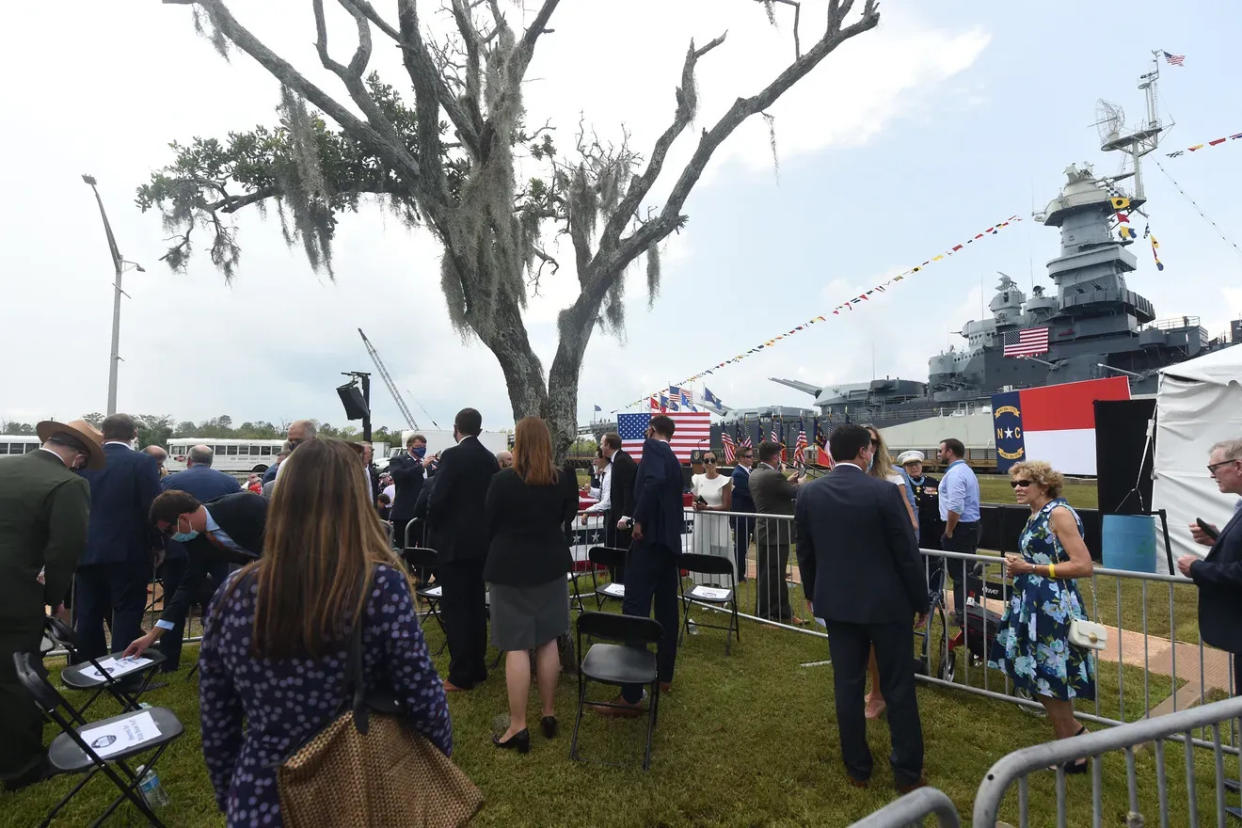Opinion: As the first World War II Heritage City, Wilmington started a nationwide trend

From Manitowac to Pascagoula, Casper to Savannah. From New Orleans to Wichita, Oak Ridge to Paterson. Gone nationwide.
Holy cow, see what Wilmington started!
The connection? We’ve all earned National Park Service designation among the nineteen American World War II Heritage Cities.
This national history preservation project Wilmington conceived, organized, and led, with statewide support, from 2008 culminated with our designation as the first such city by President Donald Trump here on Sept. 2, 2020.
The recognition program took off. The word circulated. Cities wanted in.
Senator Thom Tillis and Congressman David Rouzer, with an earlier push from Congressman Mike McIntyre, engineered through Congress our draft legislation. Trump signed the law in March 2019, establishing the program administered by the Secretary of the Interior.
Cities seeking selection must qualify within two detailed criteria we also developed: what did you do for the war effort, and how have you preserved that legacy? One city per state.
The NPS website and city websites emphasize war effort qualifications. Wide ranging, they include aircraft, submarine, cargo ship, and landing craft production; the atomic bomb Manhattan project; the manufacture of engines, tanks, silk/rayon, and rifles; air bases; ports; and flight crew training.
My principal interest is legacy preservation. Example: protecting and promoting our pride and joy, the restored WWII Hannah Block Historic USO museum. Citizens cannot recreate wartime. But citizens can control how its remembered . Therefore, if I were a city, or the NPS, I’d demand legacy accomplishments.
In these designated cities, such recognition ranges from New Orleans’ National WWII Museum, and National Museums of the Air Force and Naval Aviation; to a World War II aircraft carrier and submarine; an historic armory; airfields; markers; celebrations; and veterans activities.
Wilmington sources provided substantial information and images for the NPS website displaying our designation. But, disappointingly, they don’t mention us as the first, or as the program originator. They well know, and frankly, this ought to be in the public record. Wikipedia, however, cites both facts and those who led the way for Wilmington.
All told, the creative NPS wesbite coverage informs and educates. The nominating cities combed their library files, consulted veterans councils, engaged congressmen, and loosed publicity agents. Good for them. Saving history.

The cities/jurisdictions:
Casper and Natrona counties, Wyoming.
East Hartford, Connecticut
Evansville, Indiana
Lewistown, Montana
Los Alamos County, New Mexico
Manitowoc, Wisconsin
Montgomery County (Dayton), Ohio
New Orleans, Louisiana
Oak Ridge, Tennessee*
Pascagoula, Mississippi
Paterson, New Jersey
Pensacola and Escambia counties, Florida
Pittsburgh, Pennsylvania
Savannah and Chatham counties, Georgia
South Texas Bend area and Corpus Christi, Texas
Springfield, Massachusetts
Tri-Cities (Kennewick, Pasco, Richland, and West Richland), Washington*
Wichita, Kansas
* These cities, Manhattan Project colleagues, share commonality within the Department of Energy’s cleanup work.
Checking city websites increased my home front knowledge. For instance, Manitowac, on Lake Michigan, built 28 Gato-class submarines. They kept one as a souvenir.
Springfield’s pre-American Revolution armory, with nearly half its workforce Women Ordnance Workers, produced more than three million Garand M1 rifles. Still producing weapons.
Paterson, historically called the “Silk City,” because of supply chain deficiencies, switched to nylon production. The Curtis-Wright Corporation employed 50,000 to manufacture 29,269 aircraft including Douglas dive bombers and the B-17 Flying Fortress; 143,000 aircraft engines; 146,000 electric propellers; and Sherman tanks. I never realized all this. They remember with commemorations and memorials.
Wichita, “The Air Capitol of the World,” manufactured nearly 26,000 aircraft, including 1,600 B-29 Superfortresses. They’ve restored one, nicknamed “Doc,” their aviation ambassador. Its population doubled with war workers. The Coleman Company produced one million G.I. Pocket Stoves. Cross-country troop trains flooded the city. Here’s saluting Wichita for its veterans and commemoration events, memorials, and honoring the decorated cruiser USS Wichita.
Savannah built minesweepers and cargo vessels. Its port shipped 1.24 million tons of war material produced by local companies. Citizens bought war bonds to purchase a B-17 bomber, aptly named “City of Savannah.” They’ve preserved it in the world class National Museum of the Mighty Eighth Air Force in nearby Pooler. I’ve visited often.
The Casper Army Air Base trained nearly 18,000 B-17 and B-24 Liberator bomber fliers and ground crew members for Europe and Pacific duty. The old enlisted men's club houses the Wyoming Veterans Memorial Museum. Some 100 of the original 400 base structures remain.
Naval Air Station Corpus Christi and its Neuces and Kleberg counties satellite fields graduated 35,000 Navy student pilots, including George H.W. Bush and astronaut John Glenn. The carrier USS Lexington Museum, landmarks, historical markers, parks, statues, archives, organizations, and public ceremonies honor the Navy and Coast Guard.
So, on we go. The nomination period for a 2023 designation closes Sept. 1.
See what Wilmington started!
Wilmington author and military historian Wilbur D. Jones, Jr. was heavily involved with the World War II Heritage City project.... wilburjones.com.
This article originally appeared on Wilmington StarNews: World War II Heritage City movement started in Wilmington

